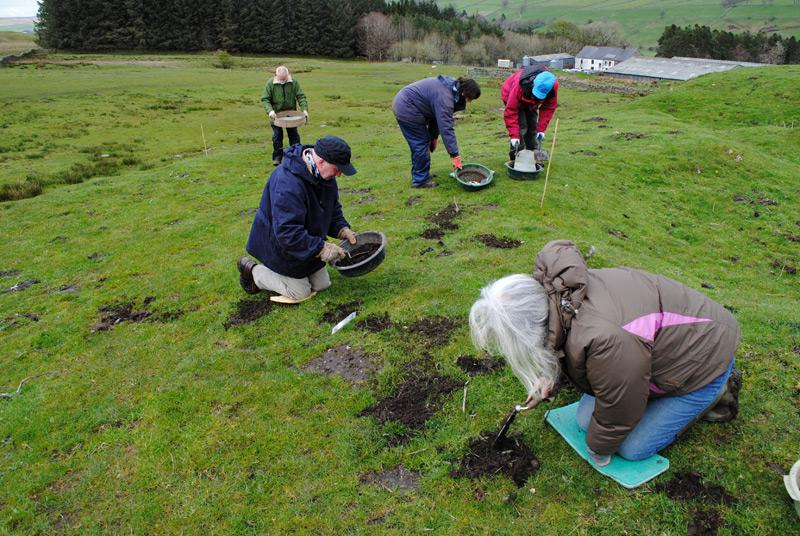Moles Unearth Ancient Roman Artefacts

words by Carol King
Archaeologists in England have discovered artefacts at an Ancient Roman fort – with the help of moles.
Volunteers from the Altogether Archaeology project have been developing a new archaeological survey technique at Epiacum (Whitley Castle) Roman fort near Alston in Cumbria: surveying molehills. The fort is a scheduled ancient monument, so it is illegal to disturb the ground within it without special consent. However, moles are not subject to scheduled monument legislation and they continue to dig around inside the fort. The moles’ digging disturbs archaeological deposits, thus bringing pieces of pottery and other finds to the surface where they can be gathered from molehills.
Altogether Archaeology volunteers worked with the moles to carry out an investigation of the fort. Using canes stuck in the ground, the fort was divided up into a grid of squares. The molehills in each square were sieved and any finds retained. The BBC reports that so far, the moles have unearthed both fragments of, and intact items made from, pottery and glass, as well as jet jewellery and even a decorative bronze dolphin.
Overlooking the South Tyne Valley, Epiacum is one of the least known, but best preserved, Roman forts in Britain. It was probably built in the early second century at about the same time as Hadrian’s Wall. The fort was garrisoned through until c. 400AD. It lies on the Maiden Way, the Roman road from Kirby Thore to Carvoran on Hadrian’s Wall, and experts think it was linked in some way to Roman lead and silver mining.
You may also be interested in...
Latest property in Italy
370 m²
7 Bedrooms
279000
210 m²
4 Bedrooms
135000
270 m²
4 Bedrooms
395000
0 m²
8 Bedrooms
1950000
0 m²
8 Bedrooms
0
What to do in Italy
Speak, live and enjoy Italian with Renata: homestay experience in the heart of Milan, in-person and online lessons
8-day Puglia small group guided tours, Southern Italy












